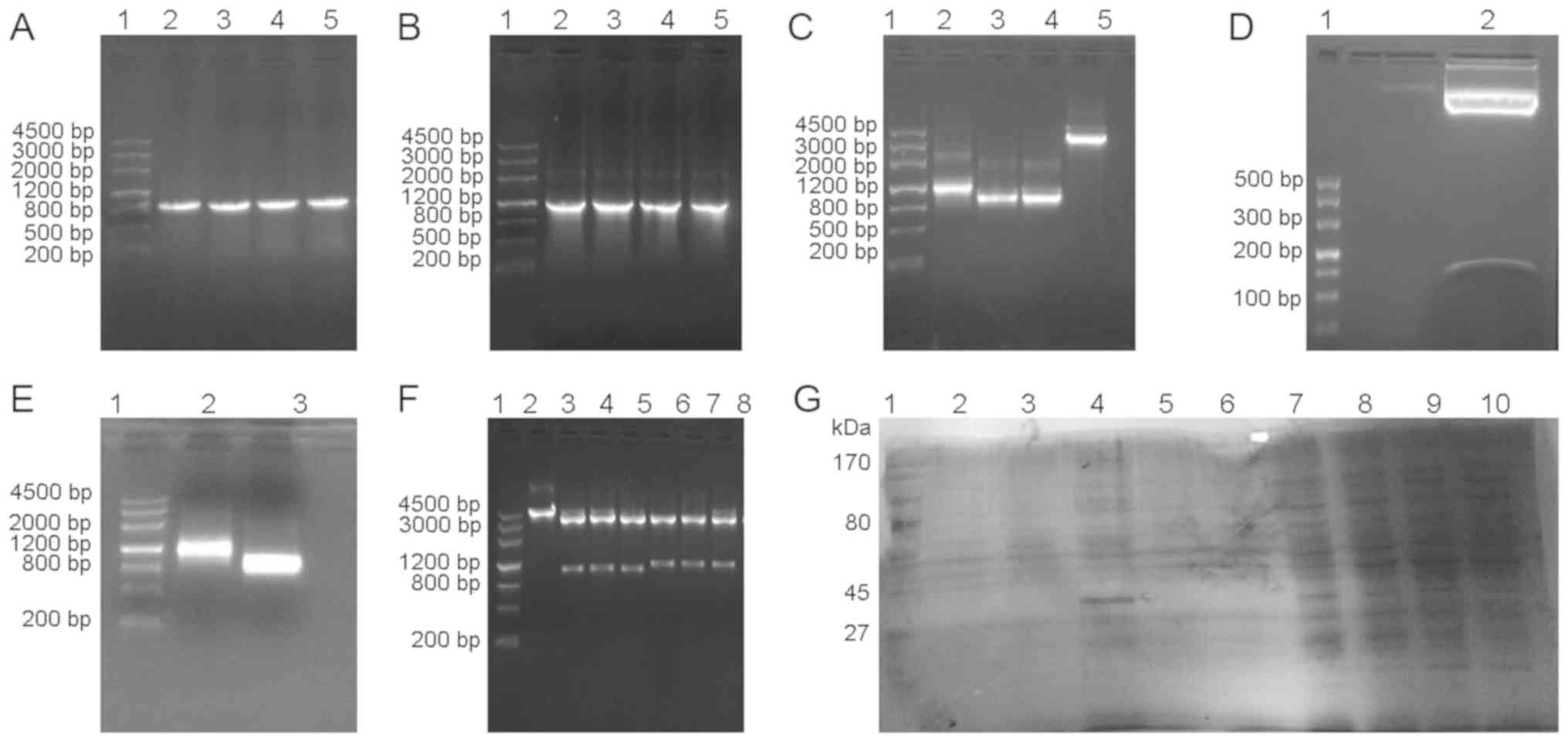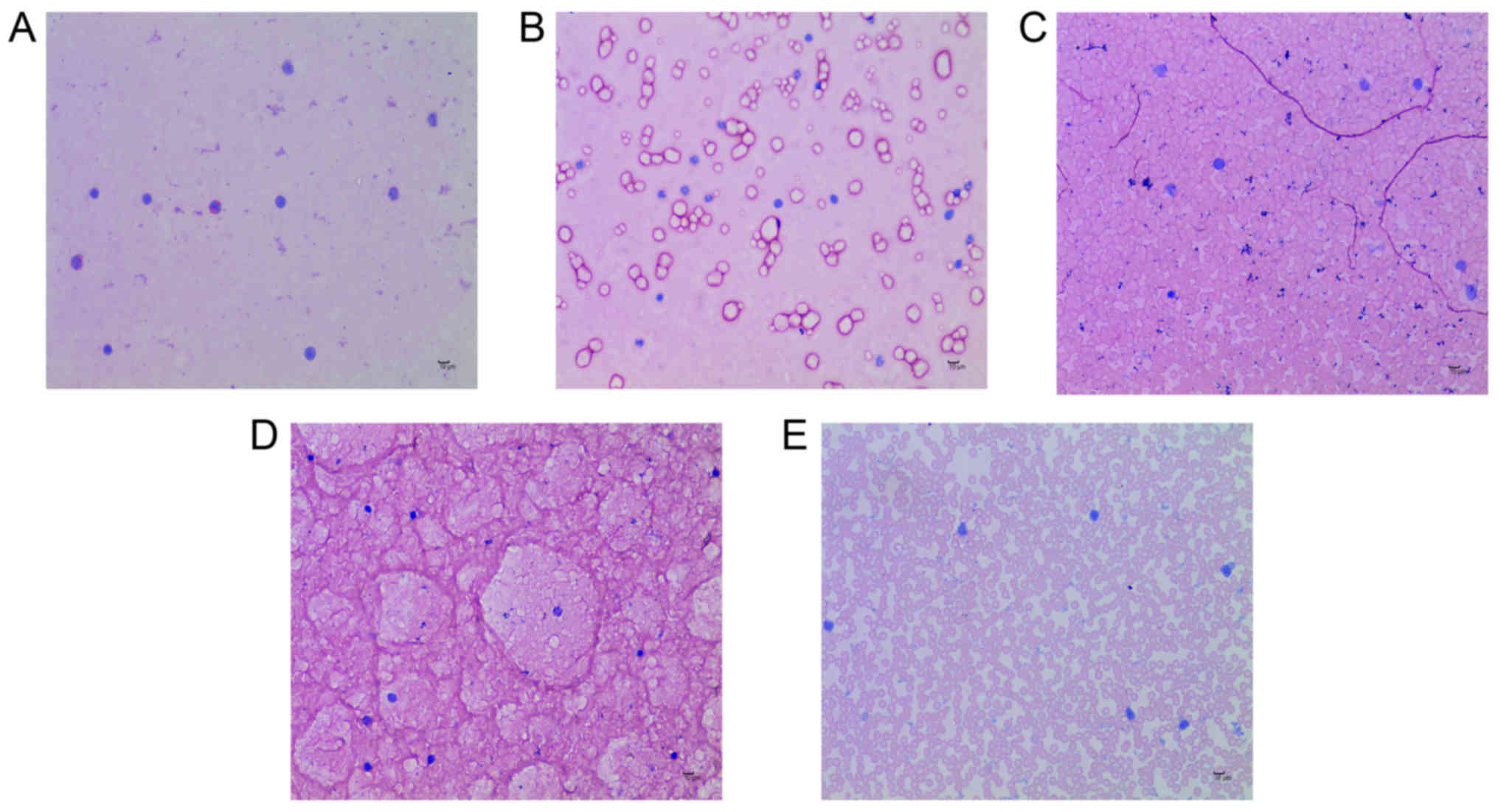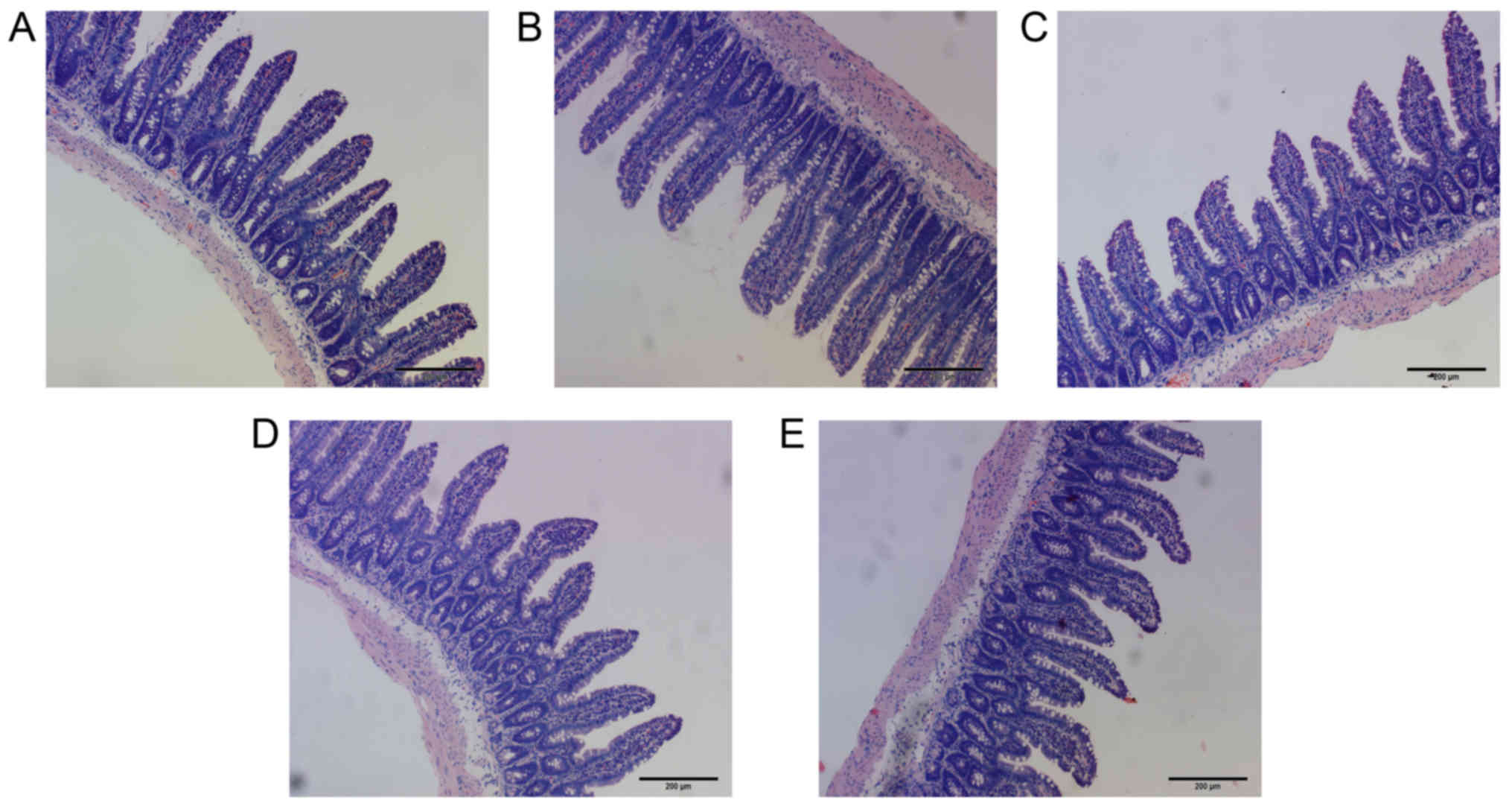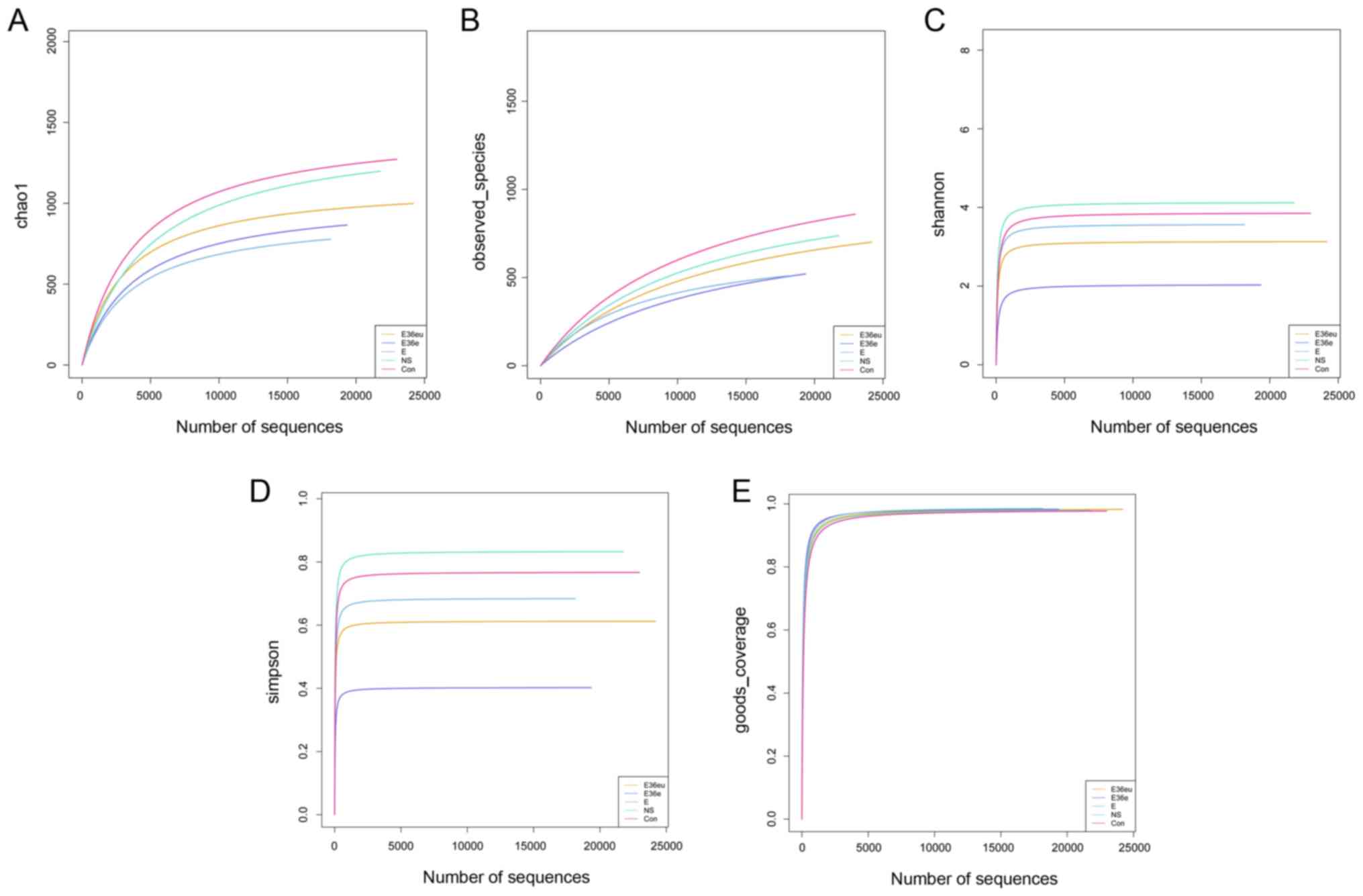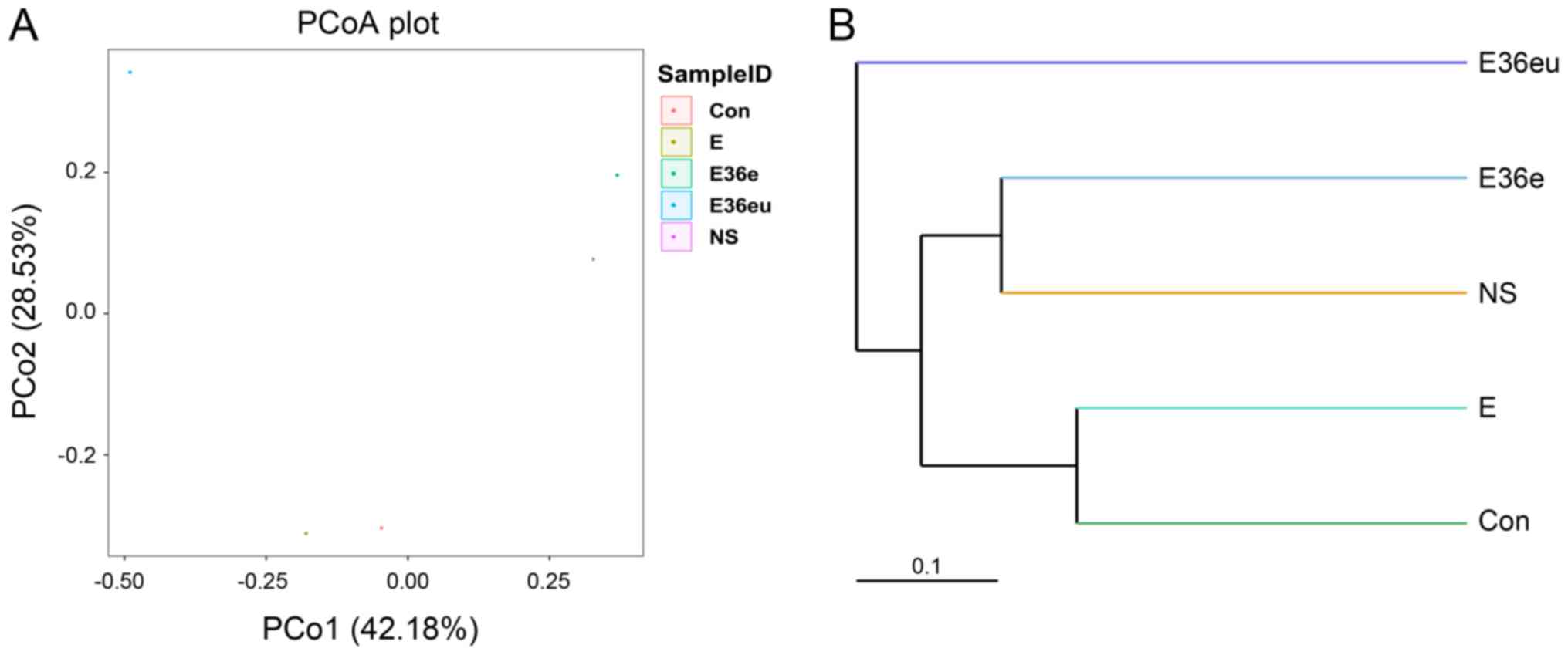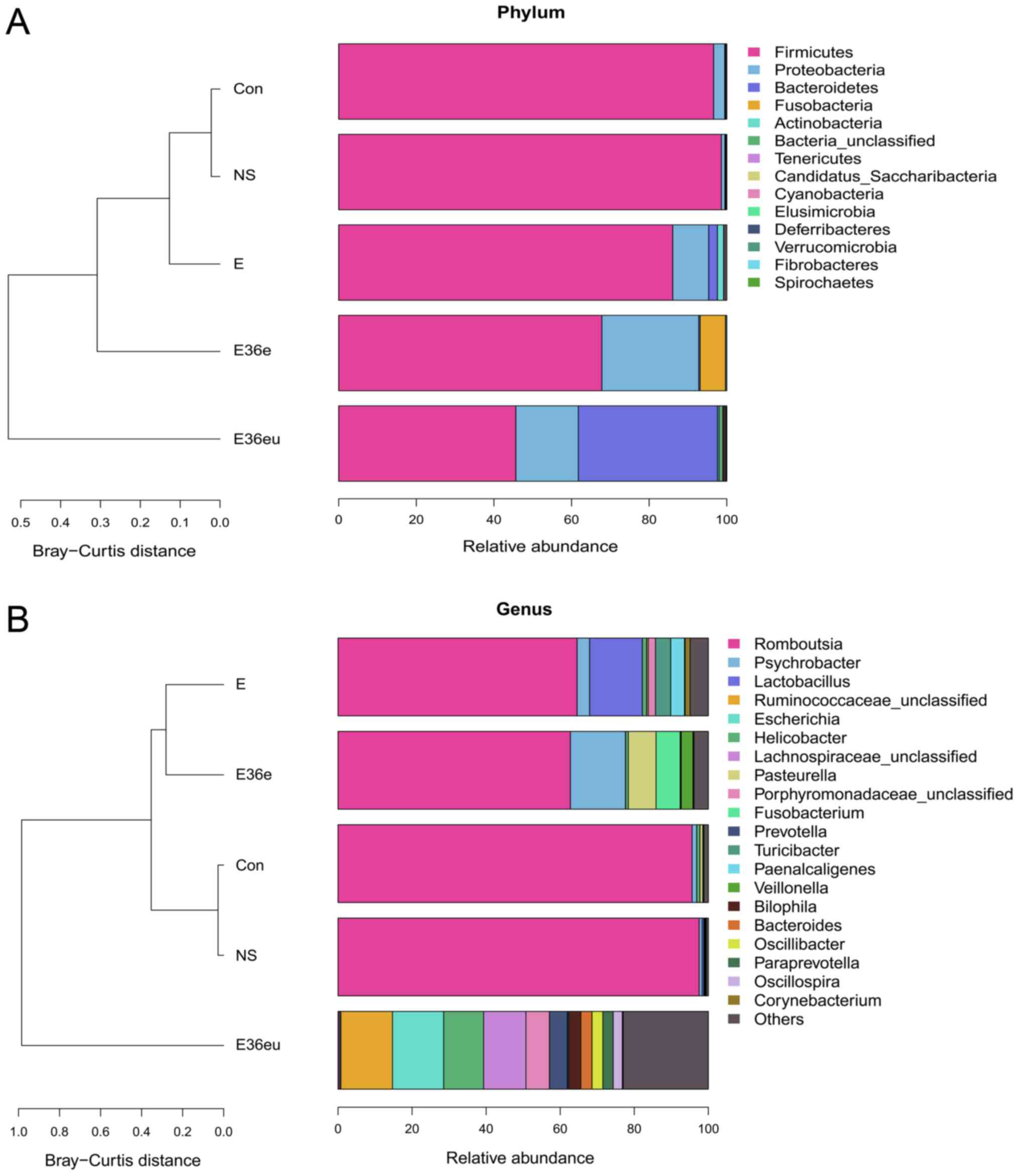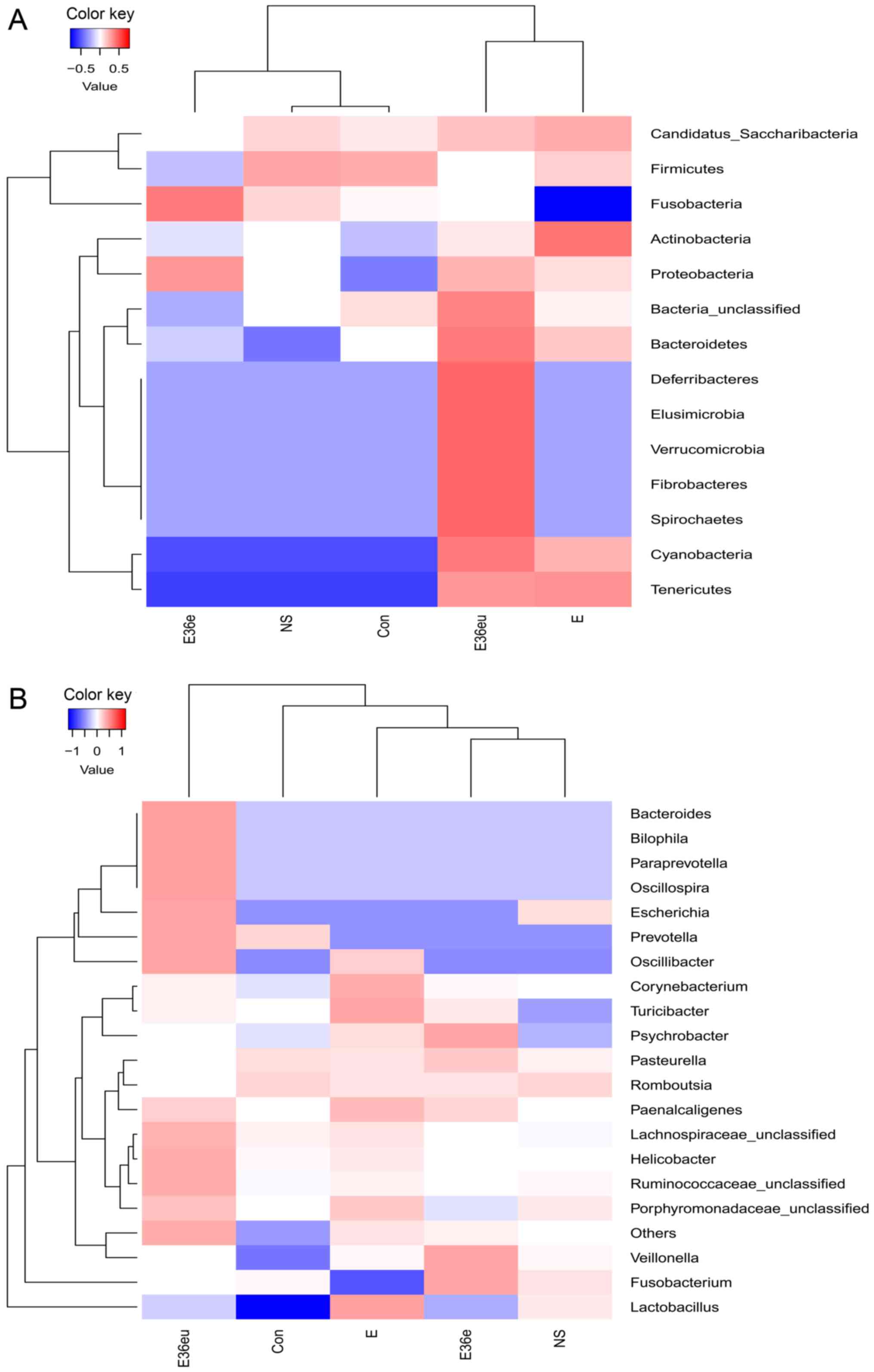|
1
|
Rock KL, Kataoka H and Lai JJ: Uric acid
as a danger signal in gout and its comorbidities. Nat Rev
Rheumatol. 9:13–23. 2013. View Article : Google Scholar :
|
|
2
|
Mallat SG, Al Kattar S, Tanios BY and
Jurjus A: Hyperuricemia, hypertension, and chronic kidney disease:
An emerging association. Curr Hypertens Rep. 18:742016. View Article : Google Scholar : PubMed/NCBI
|
|
3
|
Alvarez-Lario B and Macarron-Vicente J:
Uric acid and evolution. Rheumatology (Oxford). 49:2010–2015. 2010.
View Article : Google Scholar
|
|
4
|
Mandal AK and Mount DB: The molecular
physiology of uric acid homeostasis. Annu Rev Physiol. 77:323–345.
2015. View Article : Google Scholar
|
|
5
|
Li Q, Li X, Wang J, Liu H, Kwong JS, Chen
H, Li L, Chung SC, Shah A, Chen Y, et al: Diagnosis and treatment
for hyperuricemia and gout: A systematic review of clinical
practice guidelines and consensus statements. BMJ Open.
9:e266772019. View Article : Google Scholar
|
|
6
|
Kuo CF, Grainge MJ, Mallen C, Zhang W and
Doherty M: Rising burden of gout in the UK but continuing
suboptimal management: A nationwide population study. Ann Rheum
Dis. 74:661–667. 2015. View Article : Google Scholar :
|
|
7
|
Smith E, Hoy D, Cross M, Merriman TR, Vos
T, Buchbinder R, Woolf A and March L: The global burden of gout:
Estimates from the global burden of disease 2010 study. Ann Rheum
Dis. 73:1470–1476. 2014. View Article : Google Scholar : PubMed/NCBI
|
|
8
|
Elfishawi MM, Zleik N, Kvrgic Z, Michet CJ
Jr, Crowson CS, Matteson EL and Bongartz T: The rising incidence of
gout and the increasing burden of comorbidities: A population-based
study over 20 years. J Rheumatol. 45:574–579. 2018. View Article : Google Scholar :
|
|
9
|
Chiang KM, Tsay YC, Vincent NT, Yang HC,
Huang YT, Chen CH and Pan WH: Is hyperuricemia, an early-onset
metabolic disorder, causally associated with cardiovascular disease
events in han Chinese? J Clin Med. 8:E12022019. View Article : Google Scholar : PubMed/NCBI
|
|
10
|
Seoane-Mato D, Sanchez-Piedra C,
Silva-Fernandez L, Sivera F, Blanco FJ, Pérez Ruiz F, Juan-Mas A,
Pego-Reigosa JM, Narváez J, Quilis Martí N, et al: Prevalence of
rheumatic diseases in adult population in Spain (EPISER 2016
study): Aims and methodology. Reumatol Clin. 15:90–96. 2019.(In
English, Spanish). View Article : Google Scholar
|
|
11
|
Liu CW, Liao PC, Chen KC, Chiu YW, Liu YH,
Ke SR and Wu YW: Relationship of serum uric acid and Killip class
on mortality after acute ST-segment elevation myocardial infarction
and primary percutaneous coronary intervention. Int J Cardiol.
226:26–33. 2017. View Article : Google Scholar
|
|
12
|
Neogi T, Jansen TL, Dalbeth N, Fransen J,
Schumacher HR, Berendsen D, Brown M, Choi H, Edwards NL, Janssens
HJ, et al: 2015 gout classification criteria: An American college
of rheumatology/ European league against rheumatism collaborative
initiative. Arthritis Rheumatol. 67:2557–2568. 2015. View Article : Google Scholar : PubMed/NCBI
|
|
13
|
Roumeliotis S, Roumeliotis A, Dounousi E,
Eleftheriadis T and Liakopoulos V: Dietary antioxidant supplements
and uric acid in chronic kidney disease: A review. Nutrients.
11:pii: E1911. 2019. View Article : Google Scholar : PubMed/NCBI
|
|
14
|
Ryu S, Chang Y, Zhang Y, Kim SG, Cho J,
Son HJ, Shin H and Guallar E: A cohort study of hyperuricemia in
middle-aged South Korean men. Am J Epidemiol. 175:133–143. 2012.
View Article : Google Scholar
|
|
15
|
Johnson RJ, Bakris GL, Borghi C, Chonchol
MB, Feldman D, Lanaspa MA, Merriman TR, Moe OW, Mount DB, Sanchez
Lozada LG, et al: Hyperuricemia, acute and chronic kidney disease,
hypertension, and cardiovascular disease: Report of a scientific
workshop organized by the national kidney foundation. Am J Kidney
Dis. 71:851–865. 2018. View Article : Google Scholar : PubMed/NCBI
|
|
16
|
Liu CW, Chen KH, Tseng CK, Chang WC, Wu YW
and Hwang JJ: The dose-response effects of uric acid on the
prevalence of metabolic syndrome and electrocardiographic left
ventricular hypertrophy in healthy individuals. Nutr Metab
Cardiovasc Dis. 29:30–38. 2019. View Article : Google Scholar
|
|
17
|
Williams B, Mancia G, Spiering W, Agabiti
Rosei E, Azizi M, Burnier M, Clement DL, Coca A, de Simone G,
Dominiczak A, et al: 2018 ESC/ESH Guidelines for the management of
arterial hypertension. Eur Heart J. 39:3021–3104. 2018. View Article : Google Scholar : PubMed/NCBI
|
|
18
|
Presa M, Pérez-Ruiz F and Oyagüez I:
Second-line treatment with lesinurad and allopurinol versus
febuxostat for management of hyperuricemia: A cost-effectiveness
analysis for Spanish patients. Clin Rheumatol. 38:3521–3528. 2019.
View Article : Google Scholar : PubMed/NCBI
|
|
19
|
Becker MA, Schumacher HJ Jr, Wortmann RL,
MacDonald PA, Eustace D, Palo WA, Streit J and Joseph-Ridge N:
Febuxostat compared with allopurinol in patients with hyperuricemia
and gout. N Engl J Med. 353:2450–2461. 2005. View Article : Google Scholar : PubMed/NCBI
|
|
20
|
Liu CW, Chang WC, Lee CC, Shau WY, Hsu FS,
Wang ML, Chen TC, Lo C and Hwang JJ: The net clinical benefits of
febuxostat versus allopurinol in patients with gout or asymptomatic
hyperuricemia-A systematic review and meta-analysis. Nutr Metab
Cardiovasc Dis. 29:1011–1022. 2019. View Article : Google Scholar : PubMed/NCBI
|
|
21
|
Mu Z, Wang W, Wang J, Lv W, Chen Y, Wang
F, Yu X, Wang Y, Cheng B and Wang Z: Predictors of poor response to
urate-lowering therapy in patients with gout and hyperuricemia: A
post-hoc analysis of a multicenter randomized trial. Clin
Rheumatol. 38:3511–3519. 2019. View Article : Google Scholar : PubMed/NCBI
|
|
22
|
White WB, Saag KG, Becker MA, Borer JS,
Gorelick PB, Whelton A, Hunt B, Castillo M and Gunawardhana L;
CARES Investigators. Cardiovascular safety of febuxostat or
allopurinol in patients with gout. N Engl J Med. 378:1200–1210.
2018. View Article : Google Scholar : PubMed/NCBI
|
|
23
|
Richette P, Doherty M, Pascual E, Barskova
V, Becce F, Castañeda-Sanabria J, Coyfish M, Guillo S, Jansen TL,
Janssens H, et al: 2016 updated EULAR evidence-based
recommendations for the management of gout. Ann Rheum Dis.
76:29–42. 2017. View Article : Google Scholar
|
|
24
|
Xu X, Li C, Zhou P and Jiang T: Uric acid
transporters hiding in the intestine. Pharm Biol. 54:3151–3155.
2016. View Article : Google Scholar : PubMed/NCBI
|
|
25
|
Jalal DI, Chonchol M, Chen W and Targher
G: Uric acid as a target of therapy in CKD. Am J Kidney Dis.
61:134–146. 2013. View Article : Google Scholar
|
|
26
|
Maiuolo J, Oppedisano F, Gratteri S,
Muscoli C and Mollace V: Regulation of uric acid metabolism and
excretion. Int J Cardiol. 213:8–14. 2016. View Article : Google Scholar
|
|
27
|
Yun Y, Yin H, Gao Z, Li Y, Gao T, Duan J,
Yang R, Dong X, Zhang L and Duan W: Intestinal tract is an
important organ for lowering serum uric acid in rats. PLoS One.
12:e1901942017. View Article : Google Scholar
|
|
28
|
Matsuo H, Tsunoda T, Ooyama K, Sakiyama M,
Sogo T, Takada T, Nakashima A, Nakayama A, Kawaguchi M, Higashino
T, et al: Hyperuricemia in acute gastroenteritis is caused by
decreased urate excretion via ABCG2. Sci Rep. 6:310032016.
View Article : Google Scholar : PubMed/NCBI
|
|
29
|
Adejumo OA, Okaka EI, Madumezia G, Okwuonu
CG and Ojogwu LI: Assessment of some cardiovascular risk factors in
predialysis chronic kidney disease patients in Southern Nigeria.
Niger Med J. 56:394–399. 2015. View Article : Google Scholar
|
|
30
|
Sakhaee K: Epidemiology and clinical
pathophysiology of uric acid kidney stones. J Nephrol. 27:241–245.
2014. View Article : Google Scholar : PubMed/NCBI
|
|
31
|
Stamp LK, O’Donnell JL and Chapman PT:
Emerging therapies in the long-term management of hyperuricaemia
and gout. Intern Med J. 37:258–266. 2007. View Article : Google Scholar : PubMed/NCBI
|
|
32
|
Terkeltaub R: Gout. Novel therapies for
treatment of gout and hyperuricemia. Arthritis Res Ther.
11:2362009. View
Article : Google Scholar : PubMed/NCBI
|
|
33
|
Cao C, Zhang H, Yang Z and Wu B: Peptide
recognition, signaling and modulation of class B G protein-coupled
receptors. Curr Opin Struct Biol. 51:53–60. 2018. View Article : Google Scholar : PubMed/NCBI
|
|
34
|
Tristan A, Benito Y, Montserret R, Boisset
S, Dusserre E, Penin F, Ruggiero F, Etienne J, Lortat-Jacob H, Lina
G, et al: The signal peptide of Staphylococcus aureus panton
valentine leukocidin LukS component mediates increased adhesion to
heparan sulfates. PLoS One. 4:e50422009. View Article : Google Scholar : PubMed/NCBI
|
|
35
|
Negi S, Pandey S, Srinivasan SM, Mohammed
A and Guda C: LocSigDB: A database of protein localization signals.
Database (Oxford). 2015.pii: bav003. 2015. View Article : Google Scholar
|
|
36
|
Lv XG, Shi YF, Xu X, Wei YL, Wang HM,
Zhang XB and Wu JL: Oryza sativa chloroplast signal recognition
particle 43 (OscpSRP43) is required for chloroplast development and
photosynthesis. PLoS One. 10:e1432492015. View Article : Google Scholar
|
|
37
|
Chen G and Jia P: Allopurinol decreases
serum uric acid level and intestinal glucose transporter-5
expression in rats with fructose-induced hyperuricemia. Pharmacol
Rep. 68:782–786. 2016. View Article : Google Scholar : PubMed/NCBI
|
|
38
|
Zhu C, Tai LL, Wan XC, Li DX, Zhao YQ and
Xu Y: Comparative effects of green and black tea extracts on
lowering serum uric acid in hyperuricemic mice. Pharm Biol.
55:2123–2128. 2017. View Article : Google Scholar : PubMed/NCBI
|
|
39
|
Dalbeth N, Phipps-Green A, House ME,
Gamble GD, Horne A, Stamp LK and Merriman TR: Body mass index
modulates the relationship of sugar-sweetened beverage intake with
serum urate concentrations and gout. Arthritis Res Ther.
17:2632015. View Article : Google Scholar : PubMed/NCBI
|
|
40
|
Caliceti C, Calabria D, Roda A and Cicero
AFG: Fructose intake, serum uric acid, and cardiometabolic
disorders: A critical review. Nutrients. 9:pii: E395. 2017.
View Article : Google Scholar : PubMed/NCBI
|
|
41
|
Abdulla MH, Sattar MA, Abdullah NA and
Johns EJ: The effect of high-fructose intake on the vasopressor
response to angiotensin II and adrenergic agonists in
sprague-dawley rats. Pak J Pharm Sci. 26:727–732. 2013.PubMed/NCBI
|
|
42
|
Lecoultre V, Egli L, Theytaz F, Despland
C, Schneiter P and Tappy L: Fructose-induced hyperuricemia is
associated with a decreased renal uric acid excretion in humans.
Diabetes Care. 36:e149–e150. 2013. View Article : Google Scholar : PubMed/NCBI
|
|
43
|
Xilifu D, Abudula A, Rehemu N, Zhao L,
Zhou X and Zhang X: Effect of rosuvastatin on hyperuricemic rats
and the protective effect on endothelial dysfunction. Exp Ther Med.
8:1683–1688. 2014. View Article : Google Scholar : PubMed/NCBI
|
|
44
|
LI Y and Xu L: Improvement for unweighted
pair group method with arithmetic mean and its application. J
Beijing Univ Technol. 33:2007.
|
|
45
|
Benson DA, Cavanaugh M, Clark K,
Karsch-Mizrachi I, Lipman DJ, Ostell J and Sayers EW: GenBank.
Nucleic Acids Res. 41(Database Issue): D36–D42. 2013. View Article : Google Scholar :
|
|
46
|
Hosomi A, Nakanishi T, Fujita T and Tamai
I: Extra-renal elimination of uric acid via intestinal efflux
transporter BCRP/ABCG2. PLoS One. 7:e304562012. View Article : Google Scholar : PubMed/NCBI
|
|
47
|
Szczurek P, Mosiichuk N, Woliński J,
Yatsenko T, Grujic D, Lozinska L, Pieszka M, Święch E, Pierzynowski
SG and Goncharova K: Oral uricase eliminates blood uric acid in the
hyperuricemic pig model. PLoS One. 12:e1791952017. View Article : Google Scholar
|
|
48
|
Takada T, Ichida K, Matsuo H, Nakayama A,
Murakami K, Yamanashi Y, Kasuga H, Shinomiya N and Suzuki H: ABCG2
dysfunction increases serum uric acid by decreased intestinal urate
excretion. Nucleosides Nucleotides Nucleic Acids. 33:275–281. 2014.
View Article : Google Scholar : PubMed/NCBI
|
|
49
|
Bronk JR and Shaw MI: The transport of
uric acid across mouse small intestine in vitro. J Physiol.
378:229–239. 1986. View Article : Google Scholar : PubMed/NCBI
|
|
50
|
Bahn A, Hagos Y, Reuter S, Balen D, Brzica
H, Krick W, Burckhardt BC, Sabolic I and Burckhardt G:
Identification of a new urate and high affinity nicotinate
transporter, hOAT10 (SLC22A13). J Biol Chem. 283:16332–16341. 2008.
View Article : Google Scholar : PubMed/NCBI
|
|
51
|
Góth L: Rasburicase therapy may cause
hydrogen peroxide shock. Orv Hetil. 149:1587–1590. 2008.(In
Hungarian). View Article : Google Scholar
|
|
52
|
Skar V, Skar AG, Bratlie J and Osnes M:
Beta-glucuronidase activity in the bile of gallstone patients both
with and without duodenal diverticula. Scand J Gastroenterol.
24:205–212. 1989. View Article : Google Scholar : PubMed/NCBI
|
|
53
|
Justesen T, Nielsen OH, Jacobsen IE, Lave
J and Rasmussen SN: The normal cultivable microflora in upper
jejunal fluid in healthy adults. Scand J Gastroenterol. 19:279–282.
1984. View Article : Google Scholar : PubMed/NCBI
|
|
54
|
Hollister EB, Gao C and Versalovic J:
Compositional and functional features of the gastrointestinal
microbiome and their effects on human health. Gastroenterology.
146:1449–1458. 2014. View Article : Google Scholar : PubMed/NCBI
|
|
55
|
Wang Y, Lin Z, Zhang B, Nie A and Bian M:
Cichorium intybus L. Promotes intestinal uric acid excretion by
modulating ABCG2 in experimental hyperuricemia. Nutr Metab (Lond).
14:382017. View Article : Google Scholar
|
|
56
|
Yadav H, Lee JH, Lloyd J, Walter P and
Rane SG: Beneficial metabolic effects of a probiotic via
butyrate-induced GLP-1 hormone secretion. J Biol Chem.
288:25088–25097. 2013. View Article : Google Scholar : PubMed/NCBI
|
|
57
|
Balakrishnan B and Taneja V: Microbial
modulation of the gut microbiome for treating autoimmune diseases.
Expert Rev Gastroenterol Hepatol. 12:985–996. 2018. View Article : Google Scholar : PubMed/NCBI
|
|
58
|
Rinaldi E, Consonni A, Guidesi E, Elli M,
Mantegazza R and Baggi F: Gut microbiota and probiotics: Novel
immune system modulators in myasthenia gravis? Ann NY Acad Sci.
1413:49–58. 2018. View Article : Google Scholar : PubMed/NCBI
|
|
59
|
Chang CJ, Lin TL, Tsai YL, Wu TR, Lai WF,
Lu CC and Lai HC: Next generation probiotics in disease
amelioration. J Food Drug Anal. 27:615–622. 2019. View Article : Google Scholar : PubMed/NCBI
|
|
60
|
Bagheri S, Heydari A, Alinaghipour A and
Salami M: Effect of probiotic supplementation on seizure activity
and cognitive performance in PTZ-induced chemical kindling.
Epilepsy Behav. 95:43–50. 2019. View Article : Google Scholar : PubMed/NCBI
|
|
61
|
Akkasheh G, Kashani-Poor Z,
Tajabadi-Ebrahimi M, Jafari P, Akbari H, Taghizadeh M, Memarzadeh
MR, Asemi Z and Esmaillzadeh A: Clinical and metabolic response to
probiotic administration in patients with major depressive
disorder: A randomized, double-blind, placebo-controlled trial.
Nutrition. 32:315–320. 2016. View Article : Google Scholar
|















